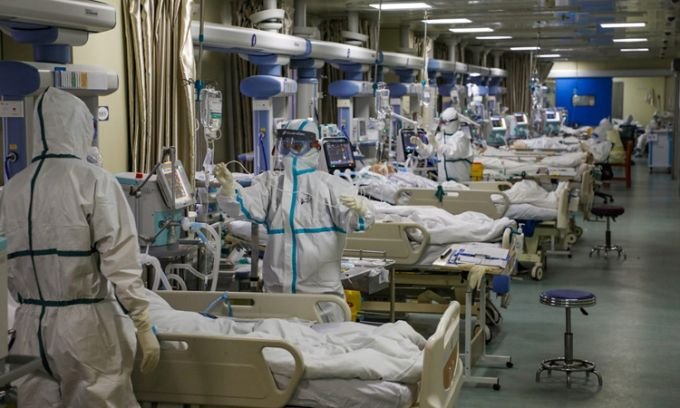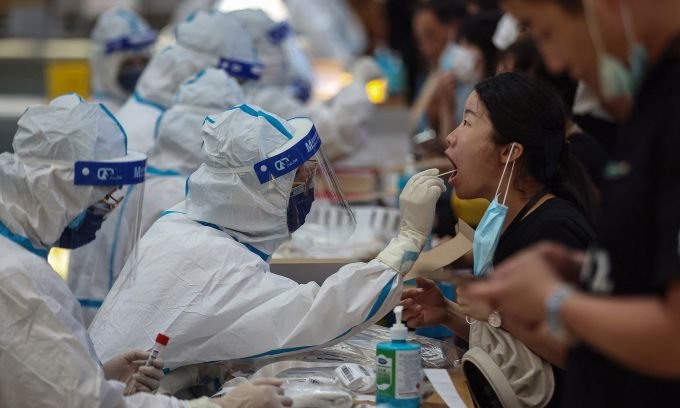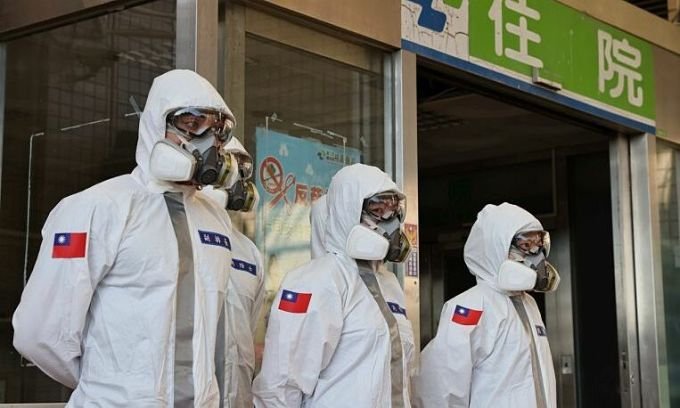As Covid-19 spreads across the globe, Maria Van Kerkhove, head of the World Health Organization’s (WHO) emerging and zoonotic disease tracking unit, emphasized the importance of accurate reporting.
According to Kerkhove, understanding the number of people infected and dying from Covid-19 will help authorities and experts better understand the severity of the epidemic in each place, and correctly calculate infection and death rates.
However, with an unpredictable pandemic like Covid-19, counting and recording the number of infections faces many challenges.
Intensive care room at a hospital in Wuhan, Hubei province, China, in February 2020.
In early February 2020, when the epidemic was still complicated in China, the epidemic center Wuhan, capital of Hubei province, reported positive signs, when the number of new infections reported each day was only
However, the situation suddenly turned around after Hubei authorities on February 13 suddenly reported nearly 15,000 new cases, 10 times higher than the previous day and the strongest increase in a day since the 1990s.
Hubei Provincial Health Commission explained they decided to change the method of calculating the number of infections `to be consistent with reports from other provinces`.
Nearly 15,000 new infections recorded on February 13 were people who were confirmed by doctors to have symptoms consistent with Covid-19, but did not necessarily have a positive test result for the virus.
According to the new calculation, people diagnosed with nCoV infection by doctors based solely on lung CT scan results are also counted in the number of F0 cases.
However, lung CT scan is considered an inaccurate method to diagnose people with Covid-19.
On February 19, China’s National Health Commission again directed to change the calculation method, requiring the recognition of nCoV infections only if the nucleic acid test results were positive, reversing Hubei’s decision.
China explains this change in calculation because it has improved its testing capacity.
`Nucleic acid testing capabilities have been greatly improved. Now all suspected or unconfirmed cases can be tested quickly. Nucleic acid testing is no longer a problem,` he added.
In early April 2020, China announced that it would begin reporting asymptomatic cases to `timely respond to social concerns`.
According to Yanzhong Huang from the US Council on Foreign Relations, it is completely unusual to separate F0 cases based on symptoms, especially when a series of studies have shown that silent infections,
A study by the University of Hong Kong shows that China’s National Health Commission issued seven different case definitions from January 2020 to early March 2020, before announcing the recording of all cases.
China has so far basically controlled Covid-19 thanks to a strict blockade strategy, widespread testing and large-scale vaccination, helping life almost return to normal.
On September 29, China’s National Health Commission recorded 6 cases of community transmission in Harbin city, Heilongjiang province, along with 16 imported cases.
Ben Cowling, professor of infectious diseases at the University of Hong Kong, an author of the above study, said the initial F0 case definition that China introduced was very limited, only including severe patients.
These continuous changes in how cases are recorded and reported are believed to have partly prevented the world from having a more accurate view of the severity of the pandemic in the early stages.
`In Wuhan, in the first phase, testing was done quite limitedly, only for seriously ill patients,` Cowling said.
However, according to David Fisman, a professor of epidemiology at the University of Toronto, with a first-time and unpredictable virus like nCoV, the way officials identify cases often changes as they understand more about the disease.
`Chinese authorities expand the way to record F0 cases when necessary so as not to miss cases of virus infection,` he explained.
Vu Hoang (According to Time, CNBC, NYTimes)










